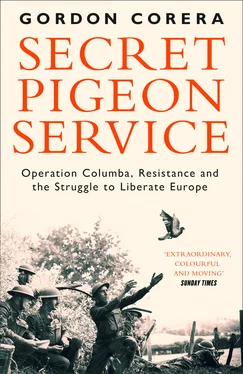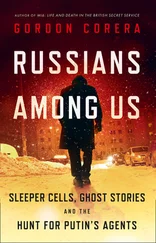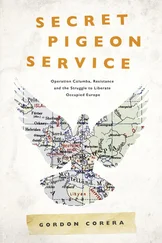Both men would always remember that day in July. There was nothing to suggest that message number 37 would be anything different from the other thirty-six they had opened in the previous three months. Melland pulled the first thin sheet of paper, nine inches square, out of the canister. The writing on it was tiny. But the closer he looked, the more astonished he was. Decades later, when Sanderson reflected on the intelligence that he had seen, he would remember this as the ‘most exciting and romantic’ of all the reports that passed through his hands.
Melland and Sanderson realized instantly that this was something different, something special. The writing spread across the two pages was small but perfectly formed, the accompanying maps expertly drawn. It felt as if every single millimetre of the two sheets had been used to cram in as many words as possible.
The author of the message had helpfully recommended placing the sheets against a dark paper and using a magnifying glass after cutting it up and reassembling it so that it was all in the right order. As the team set about typing out a report, they found that the transcription came to 5,000 words and took up twelve pages. And what was in those pages was gold dust.
‘This message is from Leopold Vindictive 200’, it began in English, although the bulk was in French. It was the specificity that was so remarkable, comprising precisely the type of intelligence the team had dreamed of when they started Columba. The text referred to maps and specific symbols employed to indicate hidden German emplacements and munitions depots. An old submarine base was now being used to repair boats and was carefully concealed by shrubs and buildings. Bombs would need to fall over an area of 200 by 300 metres to destroy it, Leopold Vindictive noted. The writers had explained when to attack to avoid civilian casualties. The Shell depot near Neder-over-Heembeek should be bombed ‘without delay’ – a map indicated exactly where the key parts of the oil facility lay. Another important fuel dump was protected by concrete and so would need larger bombs. ‘At any price spare the town of Bruges,’ they had written with a care for the architectural beauty of the city.
There were also precise battle damage assessments of recent British raids in Brussels. ‘Our congratulations to the airmen who carried out the bombardment in the Rue de Birmingham on Thursday 26th June and the Rue de l’Intendant on Thursday 10th July. They were marvellous hits which filled the whole city with admiration.’ The first bomb had wiped out a building where parachutes were made while hardly damaging neighbouring houses. Nine Germans were killed, while fifteen civilians had been only slightly wounded. The second had taken out a crucial German factory. More targets were suggested – a palace inhabited by hundreds of Germans, the location of an officers’ club, another building ‘swarming’ with Germans day and night, a garage which only worked on German vehicles, other barracks. The location of a wireless jammer opposite a hotel was also given. Brussels aerodrome should be targeted, but the writers warned that most of the structures around it were actually dummies. Nearly a dozen other factories in the region were also named as playing a role in the German war effort.
In the case of one telephone exchange, the team revealed it was guarded night and day with a machine-gun post in fear of a British attack by parachutists. The Germans were supposed to call the local Civil Guard for help in the event of an attack, but Leopold Vindictive revealed that the guards were in fact quite hostile, suggesting they might take their time to arrive. ‘I have this from a man on the spot,’ they wrote.
There were also assorted items of intelligence about daily life. Dropping propaganda leaflets was fine, but little packets of chocolate should be dropped with them to show there was no lack of food in England, they recommended. The impact of British bombers and the recent German attack on Russia had worried many of the local ‘black-shirt nationalists’ who supported the Nazis, and many had begun deserting. The blackshirts trained every Sunday morning between ten and twelve at one set of barracks. Bombing them, it was suggested, would discourage any more would-be recruits, and there was no anti-aircraft gun for several kilometres around the site. The Germans had been trying to recruit locals to fight the Russians, claiming it was a crusade of Christianity; leaflets should be dropped to say that those who joined would be held accountable.
Sanderson in particular found message 37 invaluable. The most significant section of the message answered the question that haunted his waking hours – what were the invasion plans? Belgium was seen as a launching point, with barges potentially heading out from Ostend, Antwerp and other ports. Britain had its own plan to carry out a sabotage mission (codenamed Claribel) to sink barges, damage rail lines and cut power and communications once the first signs of invasion were spotted, although the department tasked with carrying this out had to acknowledge in the spring of 1941 that it had no contact with or knowledge of any Belgian resistance organization and its attempts to send in a radio operator to make contact had failed.
Leopold Vindictive had real information. A map showed the chateau of Tillegem near Bruges and revealed that it was the central communications installation for German High Command in the whole sector. The picturesque medieval chateau, surrounded by a moat, had been undergoing work for four months and Leopold Vindictive were sure it was to be used by an admiral as a base for the invasion of England. It was nearly – but not quite – ready, they reported. One hundred and fifty special technical staff used the latest radio apparatus from Siemens. Nobody (the word was underlined by the writer) was admitted to the chateau except for the chiefs and the specialists. Anybody approaching would be shot without challenge.
The site’s true purpose and importance had been unknown to anyone in Britain. If an invasion appeared imminent, it could now be targeted by bombers or even by commandos; equally, it would need to be dealt with if Britain wanted to launch its own attack on the Belgian coast. With that in mind, Leopold Vindictive described how the crucial junction for the communication cables was outside the building in concrete shelters nine metres underground, protected with reinforced steel bars. An 11,000-volt current was provided by a cable lying along the road. Further specific details were supplied of the cables and of the antennae, which sat fifty metres back. In order to identify this from the air, the writer explained, a photograph could be taken between eight and ten in the morning from a particular direction he marked on the map. This would make the complex easier to spot. Usefully, it was pointed out which anti-aircraft positions had not yet had their guns installed. In all, fifty separate locations used by the Nazis were detailed; in some cases the paper gave more than a dozen items of note about an individual position.
The professionalism of whoever sent the message was obvious. It asked for a response that would indicate, by referring to letters ascribed to different sections, what in the enclosed information was unknown to the British, and in which areas more information was still wanted. The information, the author promised, was ‘thoroughly reliable’.
But who could have produced such treasures? And could they really be trusted? There was no name other than the codename, and nothing else was known except that the team consisted of a staff of three principals and several secondary agents. But to establish his bona fides, the author did offer an unusual means of verification. ‘Identify me as follows – I am the bearded military chaplain who shook hands with Admiral Keyes on the morning of May 27th 1940 at 7.30 a.m. Ask the Admiral please where he was exactly at that moment with my most respectful greetings.’
Читать дальше












